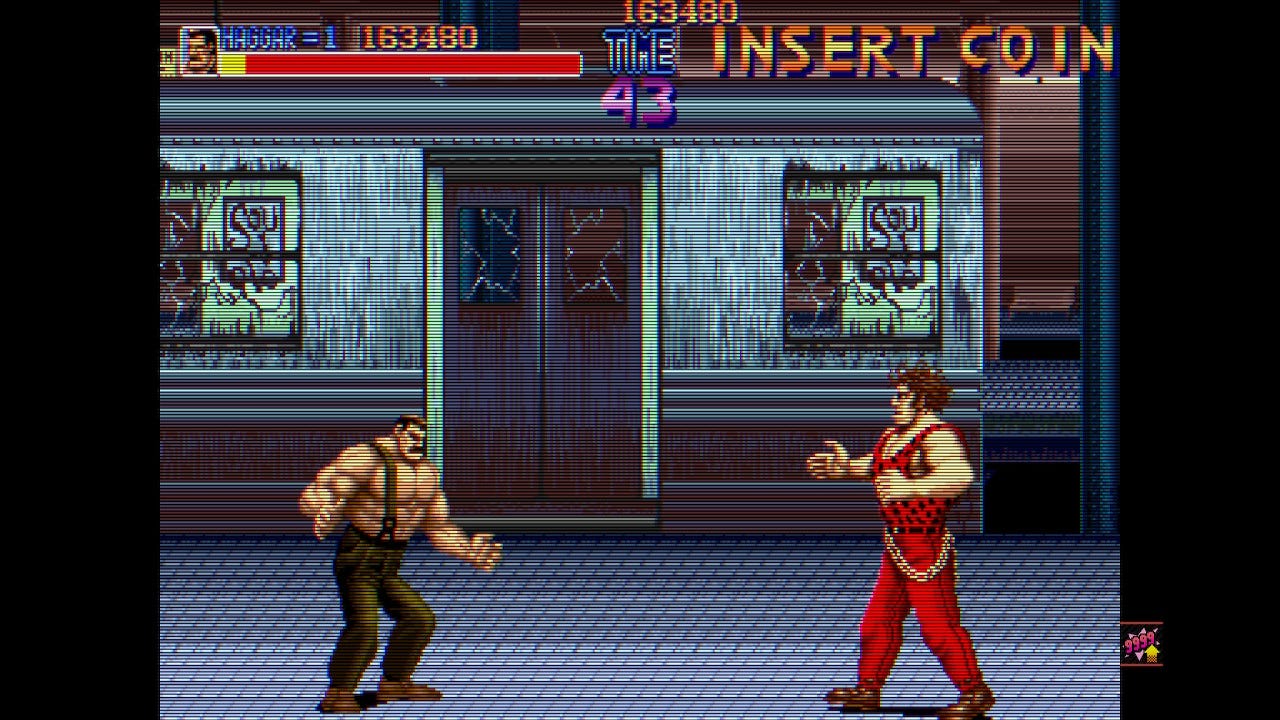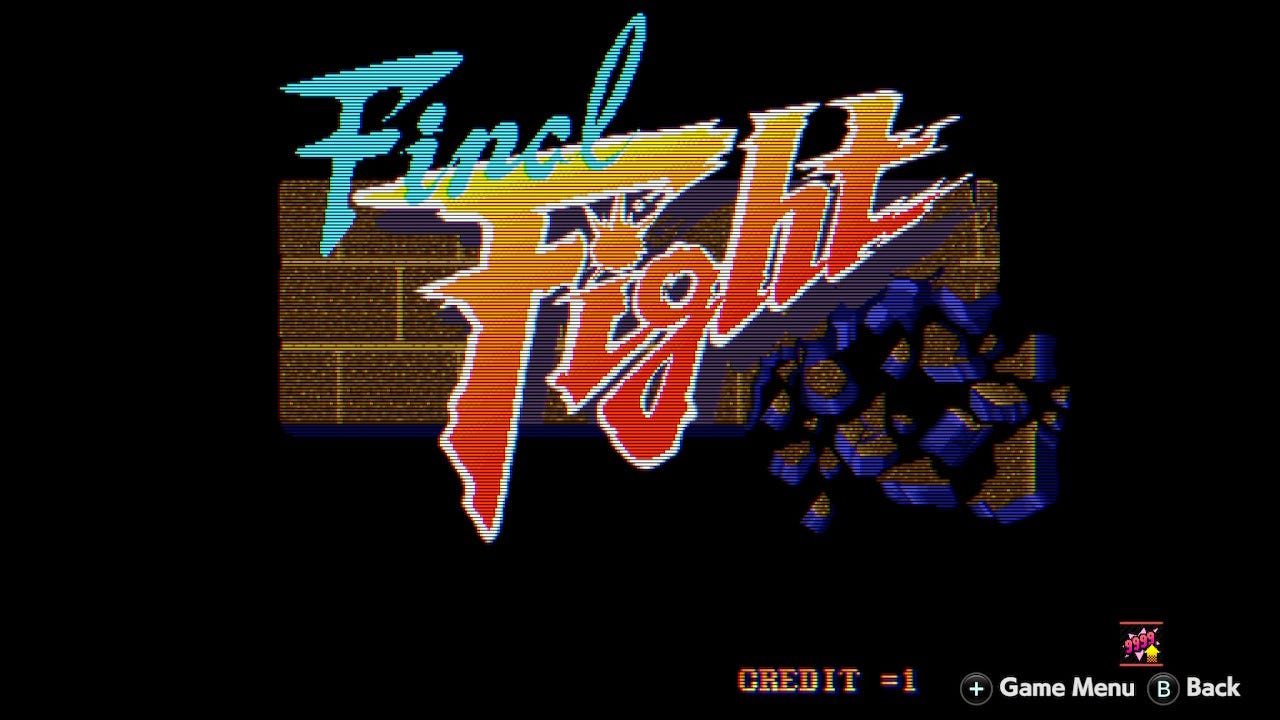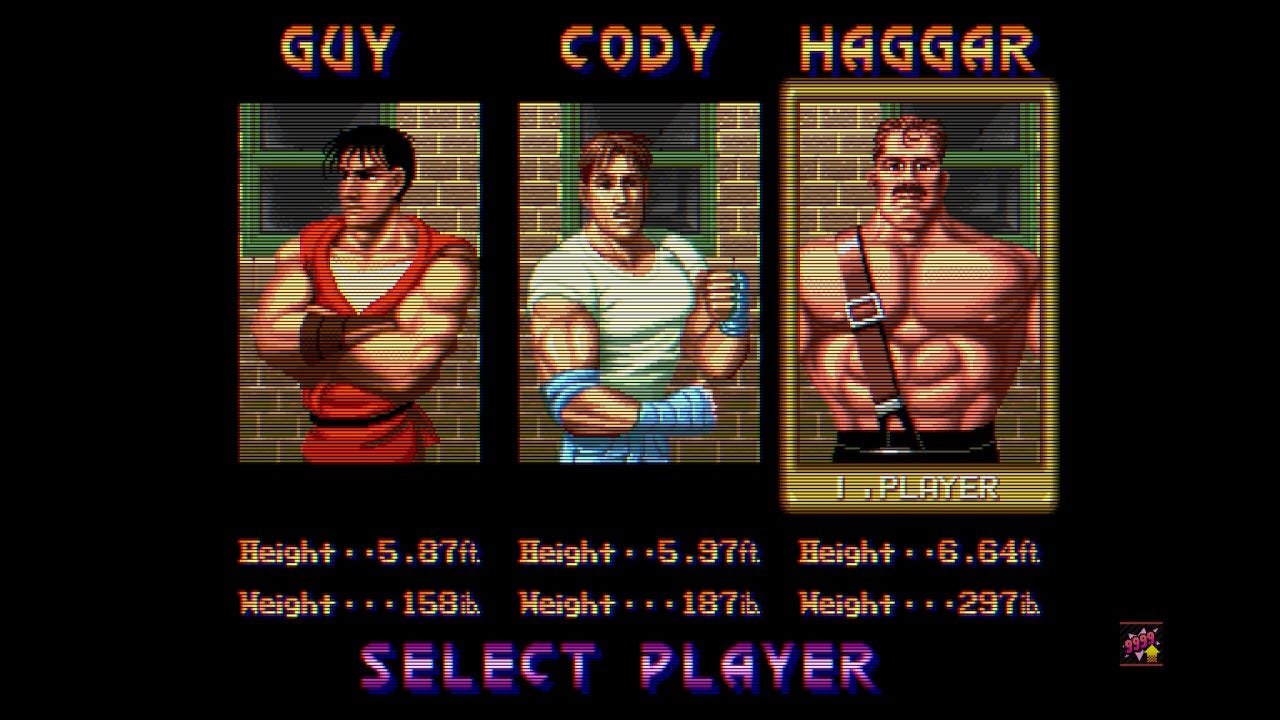XP Arcade: Final Fight
Not the first beat 'em up, no, but the one that other beat 'em ups built on top of.
This column is “XP Arcade,” in which I’ll focus on a game from the arcades, or one that is clearly inspired by arcade titles, and so on. Previous entries in this series can be found through this link.
I’ll admit it: I didn’t see what the big deal about Final Fight was for… well, decades. It’s not that it was unenjoyable or even close to that, but, having been introduced to the legendary Streets of Rage 2 first, and with my Final Fight experience limited to the port on the SNES, the deck was stacked against Capcom’s famed effort, which, to me, had seemed to have been surpassed.
And then, the Capcom Arcade Stadium… platform? collection? made the original, 1989 arcade edition of Final Fight available at its customary low prices. Its SNES port pales in comparison to this one, due in no small part to significant differences in how the two games animate: as has certainly been pointed out before, just looking at a still, you’d think the 16-bit arcade game made its way to the 16-bit consoles intact, but that’s not the case. As Hardcore Gaming 101 described it, “Little things, like the transitions between screens (like your character bashing down a door or being captured by Andore and tossed into the ring) were deleted, too. Animation frames were removed quite liberally as well, making the game feel a bit less smooth… as soon as barrels start rolling on top of that number [of on-screen enemies], heavy flickering ensues.”
Things looking a little worse in motion could be easily waved away, especially since I didn’t know what to even compare it to, but there are far more issues with the one version of Final Fight I had, to that point, played. There’s no multiplayer, which feels like it goes against the idea of a belt-scrolling beat ‘em up — I’m surely not the only one of my elder millenial cohort with vivid memories of trying to get through Double Dragon with a friend on Nintendo’s far less powerful NES. One of the three playable characters is no longer an option, which is no small thing for a game where said characters are not mere palette swaps. There’s one fewer stage to play through despite being an at-home, presumably fuller experience, and, maybe most importantly, just three enemies can show up on screen at a time.
In the arcade edition, though? It looks excellent animation-wise, with beautiful sprites not just when static but in motion. There’s multiplayer, a larger slate of playable levels, and more than three foes show up on screen at a time. How many more? Up to eight. Final Fight on the SNES cuts down on the action, between keeping things to one player and severely limiting the number of enemies you have to fight off at a time. Eight baddies to fend off being a potential outcome at any time in the arcade original, however, means you’re going to be busy constantly fighting for your life even if there are two of you throwing punches and kicks (and enemies, too).
That kind of environment, one full of nonstop action and overwhelming odds you can punch your way out of, let me finally feel what Final Fight was all about, and understand why it became such a vital game for the genre back in 1989 — and how Capcom ended up unseating Technōs, the developers behind Double Dragon and Kunio-kun/Renegade as the king of the beat ‘em up, through it. Consider me a convert, too, albeit a late one.
Even if you’ve never played Final Fight, if you played any beat ‘em up that released after it, you’ve experienced it to a degree. Breakable barrels full of food! A who’s who of bad guys to punch, ranging from lanky guys with knives to guys in puffy jackets with mohawks, to women named Roxy and Poison dressed exactly like you’d expect women in a 1989 beat ‘em up named Roxy and Poison to be dressed, who are going to hit you just as hard as any of the dudes! The obsession with wrestling that permeates… everything! And the special moves that use up health but, if used right, save you more than you would have lost using standard moves. The beat ‘em up genre wasn’t invented by Final Fight, but it certainly solidified what it was here in 1989, and every other developer took notice.

You play as one of three characters: Cody Travers, Mike Haggar, or Guy (martial artists don’t have last names, apparently). Guy’s inclusion is kind of funny, as he’s simply a friend of Cody, whose girlfriend was kidnapped by the Mad Gear Gang, and is like, “hey, I know martial arts, I can help.” It’s all less funny if you’re playing multiplayer and he’s with Cody, since that’s just bros helping bros, but if you choose to play as Guy solo, he’s the character with the least personal investment riding on this rescue. Which is even better when you consider that it’s Guy’s fiance and future father-in-law who are kidnapped in the SNES-only sequel Final Fight 2, where Guy is not a playable character. Where are your priorities, man?
As for Haggar, he’s the mayor, and his daughter is Jessica, Cody’s girlfriend, aka the one who is kidnapped at the start of Final Fight. The reason she was kidnapped is her relation to Haggar: as mayor, he’s reduced the crime rate of Metro City considerably and rejected attempts to bribe him into turning his back on the activities of the Mad Gear Gang like the previous mayor, so the gang decides maybe some kidnapping is in order to get Haggar in line. Instead, the former pro wrestler turned mayor rips off his shirt, revealing muscle size and definition usually reserved for a level boss in the beat ‘em ups that preceded Final Fight, and starts suplexing his way through his constituency.
The three characters all play differently enough that you’ll develop preferences that go beyond visual aesthetics. Guy hits the weakest but the fastest, so you can repeatedly stun foes with quick jabs and kicks until they no longer get up. Cody is a little slower than Guy but hits harder, can do a running knee for a jump attack, and is proficient with knives — instead of throwing every knife he picks up like the other characters, he can also stab with them a few times, which, as you can imagine, causes some damage. Haggar is all power: he’s the slowest of the trio, but it barely matters if you can figure out how to work with the lessened mobility, as he can make a mess of a swarm of enemies in a hurry. Throw some big punches, scoop up a foe, and then piledrive them into the ground with the shockwave from the move knocking back another group of enemies. Crunch your enemy’s face, then suplex them behind you, toppling the baddies heading your way from behind. And if you equip Haggar with a pipe, it’ll only add to his already considerable reach.
The key to Final Fight is to avoid getting hit. “Duh,” you say, but it’s the truth of things. You can have full health for long stretches, and then find yourself stunned by a lowly gang member who lands a punch, leading to the rest of the pack swarming you and hitting you repeatedly. You’ll want to avoid this happening, and you can do so in a couple of ways. The one you’ll resort to the most often is getting into the rhythm of crowd control: keep moving, keep stunning with hits, try to have enemies come at you one on top of each other so a punch to one ends up being a punch to two or three sprites at a time. Make sure you change directions and keep moving so you don’t end up surrounded and trapped. You’ll want to do flying kicks or knees or dropkicks, depending on who you’re playing as, regularly, in order to knock enemies far away from you while also creating distance between you and the ones still behind you.
And then there’s the special move, which you can see in action here as well some of the rest of what was described above:
That jumping roundhouse kick performed by Cody consumed some of his health — for every hit landed with it, more health comes off your bar. That sounds bad in a vacuum, but consider the situations shown in the above video. Cody was surrounded by multiple foes, and focusing solely on the ones in front or behind him would have meant the other group could land hits. Those hits would stun him, opening Cody up to further damage. Using the special move, though, which you do in the arcade by pressing the attack and jump buttons at the same time, and at home by doing the same or by pressing whatever button you mapped the special to, can strike everyone around your character, giving you control of how much health you’re going to lose, and giving you a chance to recover and take down the enemies one at a time from there. It costs you health, yes, but can save you from losing even more health.
Notice the second usage of the kick, too: Cody’s health is nearly empty, but the move is still deployed to save him. The special move won’t kill you, so if you’re already a single hit from death, then don’t be shy about spin kicking people in the face. You might even live long enough afterward to find a perfectly roast chicken on the ground that’ll refill a huge portion of your health bar. Given extends aren’t easily acquired outside of the first one — your options are the first 100,000 points, the first 200,000 points, or every 200,000 points, and I made the top 350 in the single-credit online leaderboards with a measly quarter-million-ish points — you don’t want to ever just give up when you have the tools to fight back and hopefully live long enough to recover some health after the fight.
It all just feels so satisfying to be walking around throwing punches at multiple dudes at a time, escaping certain death with a well-placed roundhouse kick — or, in the case of Haggar, a spinning double lariat — and to then move on to the next fight where you can do it all again. As the number of enemies on-screen only increases as you go, the intensity of the game and the rush you feel surviving said intensity only increases, too. Bosses in Final Fight make things difficult from the start, and they are certainly the source of frustration in the game that does need to remind you on occasion that it is an arcade game trying to take your money, but it’s all just so well done that the cheapness of their design isn’t a dealbreaker by any means. Especially not now, when you don’t have to keep feeding the machine quarters, but just have to press the right stick down to “insert” another credit.
And as mentioned before, Final Fight is a looker. The character designs are great, the animation is so fluid and impressive, and there was attention paid to things like making sure the subway level felt like a brief foray into the underground instead of just being a background decoration. Check out the detail in stage 2, as Guy enters the subway just before a train does:
The whole screen starts rumbling and shaking as the train enters the station, and it’s not disorienting, but does give some life to this stage. The train itself has all kinds of bits to look at, between signs on the side the inside, broken windows, the grain of the metal of the cars themselves. Maybe most impressive is that the entry of the subway train doesn’t disrupt what’s happening on screen at all: things don’t slow down or get choppy, there’s no flickering, and when the train stops, the doors smoothly open up, the rumbling stopped. Guy then hops on this train after finishing his brawl outside of it, initiating the next part of stage 2 where he’ll punch and kick and throw some passengers who are all part of the Mad Gear Gang.
(It’s worth pointing out that, for whatever reason, these videos are a little choppier in how they look than the actual game — I’m not sure if that’s the recording software of the Switch (which is usually pretty good) or YouTube (which is often not), but it’s something to note as I discuss how well everything animates and looks in motion.)
The animation ties into how Final Fight plays, too. It’s very smooth, and just as detailed, and helps everything feel satisfying. You don’t just hit a baddie, but really smash them with a punch or a kick, and Haggar scooping someone up for a piledriver or snapping them back for a suplex so hard that it knocks down other nearby enemies genuinely never gets old. It helps, too, that the three playable characters are all genuinely different in how they play, so you can decide which strength is worth which weak point for you, or even which of the three’s moves looks the coolest to see again and again, and makes the game feel better to play for you personally because of it.
The original Final Fight was an arcade release prior to being ported to the SNES, Sega CD, and far more platforms, but its sequels were designed specifically for consoles, and reviews over the years have ranged from “eh” to “this is better than the original,” depending on whom you ask. They haven’t seen the same kind of re-release frequency as the arcade original given Capcom, given they were never as popular as the original, nor as widely released, and were without the arcade pedigree or importance of Final Fight, but at least the original is back and easily accessible on any platform with Capcom Arcade Stadium on it. And that release is loaded with features. There’s the quality of life stuff you can expect from these kinds of modern collections (scanlines, filters, various display sizing options, rewind, saving and loading), but also choices for how to play at all. You can play Final Fight the standard way, with unlimited continues but no online leaderboards, or choose a number of challenge modes. Try to rack up as high of a score as you can on a single credit, or beat the game as quickly as you can, with the results from either ending up on an online leaderboard. Or, you can try one of five special challenge modes, with tweaks like the game’s difficulty increasing significantly, or the speed of the game ramping up, or the difficulty cranked up and the ability to rewind taken away, or just having a single life to complete the game on — not credit, life. Good luck with that one.
There’s obvious influence for Street Fighter II and future Capcom projects in Final Fight, from the game’s looks — the artists who worked on Final Fight also drew Street Fighter II’s iconic and excellently animated sprites — to events like that car you punch to death in a bonus level. Final Fight, originally, was going to be a Street Fighter spin-off, but became its own thing instead. Final Fight characters Guy and Cody, as well as villains Sodom and Rolento, would eventually be playable within a Street Fighter sub-series — Street Fighter Alpha — despite this change in plans, with Cody also eventually ending up in Street Fighter V. Why no Haggar in any Street Fighter? Well, he was too busy wrestling in Saturday Night Slam Masters and its two sequels, following his career as mayor of Metro City, of course. Abigail, another villain, would appear in Street Fighter V. Remember when I mentioned Poison earlier? Yeah, she’s that Poison, from Street Fighter IV and V, whip and pink hat included.
You will not be surprised to learn that Nintendo’s 1990s standards and practices forced Capcom to make Poison disappear in the SNES port of Final Fight. If she had been wearing a crucifix around her neck in addition to those heels and short shorts and the crop top, they very well might have fainted and never came to again.
Guy and Haggar would be allies in the crossover game, Namco x Capcom, but as that series expanded to include Nintendo and Sega characters by the time of Project X Zone, Final Fight saw itself pushed out — the beat ‘em up was popular in its day, but it’s no match for the likes of Resident Evil, you know. The series did have representation in SNK vs. Capcom: Card Fighters’ Clash, but SNK vs. Capcom, the fighting game series, doesn’t use any of the original Final Fight protagonists as playable characters. Boo, hiss, etc. The point is that Capcom likes to use Final Fighter characters where it can, and while Final Fight itself has slowed down with new releases (the last new entry came in 2006, wasn’t released in Japan, and was critically reviled), they’re still re-releasing the original arcade edition in the present, while using characters, both protagonist and antagonist, where it makes sense even within mainline Street Fighter games, not just presently non-canon ones. These two series are forever linked; now we just need a modern Saturday Night Slam Masters featuring Zangief as more than just a namedrop or cameo to complete the circle.
This newsletter is free for anyone to read, but if you’d like to support my ability to continue writing, you can become a Patreon supporter, or donate to my Ko-fi to fund future game coverage at Retro XP.





